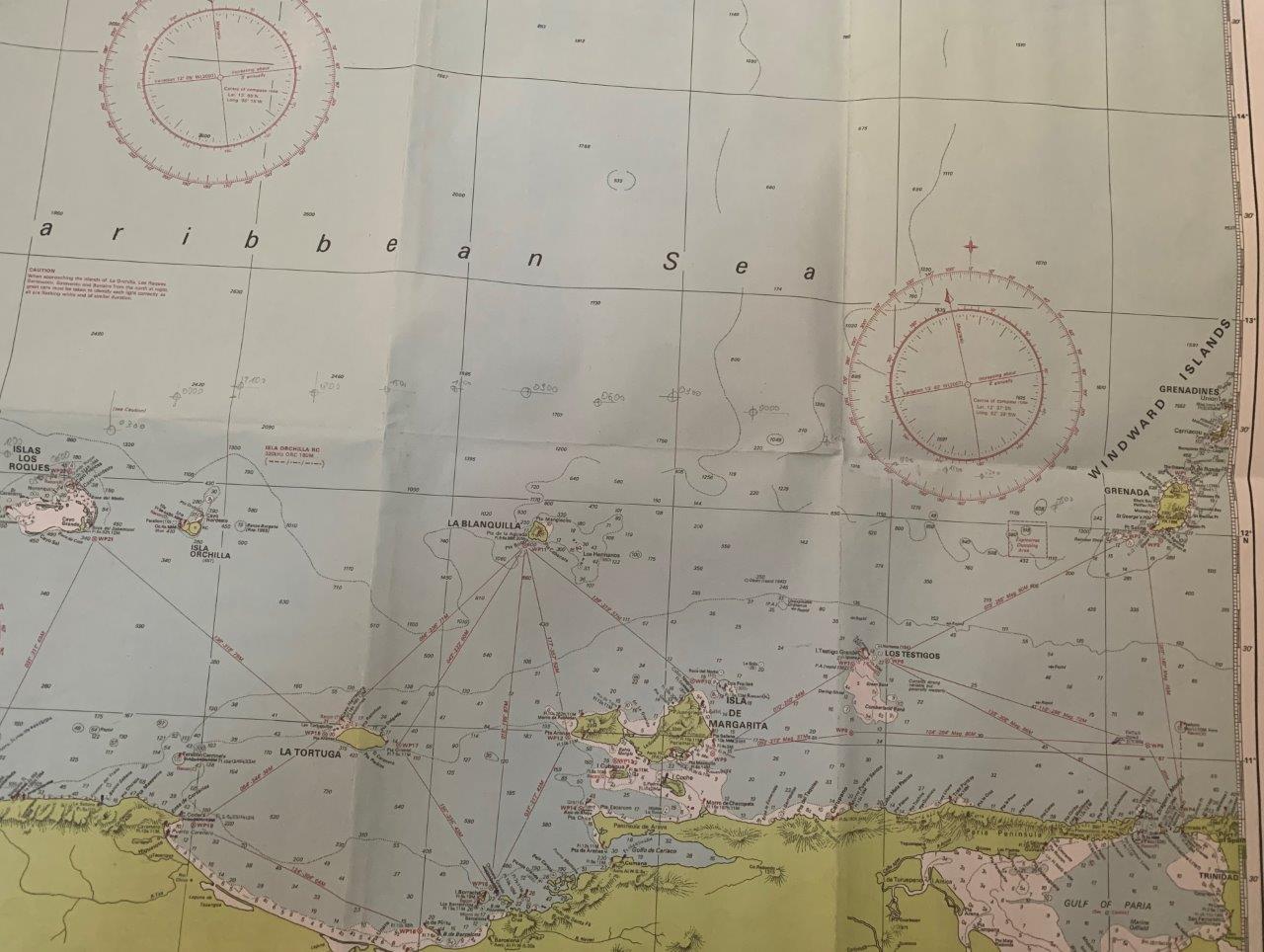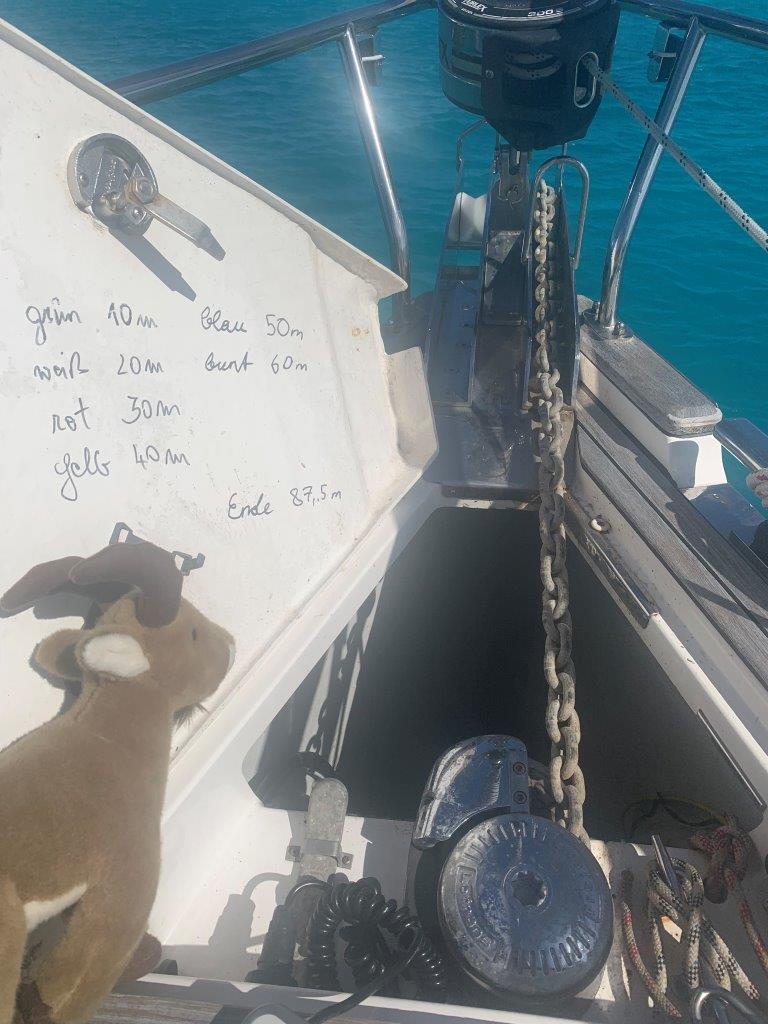Beware: long blog entry about
- preparing to go to an island / country without official information whether it is open
- unexpected sailing conditions with short waves that roll the boat from side to side
- a broken sail and a slow sailing configuration
- a non-functioning windlass in an anchor-only area
When Little Ibex thinks about cruising, she dreams about the beautiful anchorages in front of white palm beaches and snorkeling with colorful fish in turquoise waters after a smooth sail from one anchorage to another. And part of the cruising life is exactly like this. But do you know that there is another part that is quite different? Read about her trip from Grenada to Los Roques, Venezuelan offshore islands.


Los Roques are beautiful Venezuelan offshore islands about 80 nautical miles north of Caracas. Contrary to mainland Venezuela, which is currently closed for yachts, Los Roques seemed to be open. Little Ibex was in touch with a sailor who visited the islands 3 months before and told her that they have due to Covid-19 measures alternating open and closed weeks. For weeks before her departure she tried to find information on the current entry procedures on opening weeks for these islands. But it was impossible. She even met a Venezuelan sailor who has been living in Los Roques for some years, but even he was not able to get updated information. So, she calculated the weeks based on old information and aimed to arrive on a Friday morning in an open week. Worst case, entry will be denied, and she must move on to her next destination Bonaire directly. What an adventure not to know where your next official landfall will be!


The direct distance from Grenada to Los Roques is about 270 nautical miles. But as the Venezuelan coast is known for piracy incidents, little ibex has decided to take a route even further north, about 30 sm north of all offshore islands, which seemed to be also a popular cargo and tank ship route. In addition, she has checked that all relevant emergency phone numbers are saved in the fully charged satellite phone. It gives her peace of mind to be prepared in case something happened on this 2-day offshore trip.

Finally, the departure day came, she detached from the mooring ball in front of St George, Grenada in the early morning hours and waved good-bye to her sailing friends she has spent many months with. The wind was supposed to be perfect for a downwind sail with 15 to 20 knots. The first hour she went by engine as there was not enough wind behind the large Grenadian mountains. Then it was time to set the parasail and to start enjoying the downwind cruise. It turned out that there was less wind than predicted, but higher waves than expected with a very short wave period of 4-5 seconds. When it comes to waves, any period below 7 seconds makes you feel like you are on a ride in an amusement park. Especially if the waves come from the side, which makes thr ship roll right and left every few seconds. The rolling tells you very fast, where you might want to optimize your cupboard storage to reduce the noise from clunking dishes, pots, bottles and cans. And believe Little Ibex, doing so under deck while the ship is rolling is 1) not easy and 2) not really a good experience for your stomach.


Finally, all done she settled in the cockpit, checked the hydrovane and its position to the wind and watched the waves rocking and moving the boat from right to left. It was time to enjoy the sail! After a few hours a wave suddenly turned the boat to the starbord side, the wind came also further from starboard and moved the parasail further to port and a hydrovane is simply not fast enough to correct for those things. Hence, Little Ibex went to the steering wheel and corrected the course. This was more difficult than expected. After a short while she noticed that part of the parasail was partially ripped, despite not being tangled anywhere, and winds at less than 20kts. Interestingly, the lower part of the sail was still standing nicely in the wind. But going on like this would have ripped the sail entirely. Hence, she turned the engine on, took the sail down and sat for a few minutes in the cockpit wondering how this could have happened. She was very frustrated that her favorite downwind sail was not functioning anymore.


After calming down a bit and collecting her thoughts (no answer yet why the parasail broke) it was time to move on. Especially if she wanted to arrive in Los Roques before the weekend. She set a combination of poled out genua and main. Unfortunately, due to the light winds, this was way slower. The parasail would have been perfect now. How frustrating! In the end she decided to partially use the engine for additional speed. This was not the cruising she was looking for, but then it would be a shame not to be able to enter Los Roques because she is some hours late.
The rest of the trip was uneventful. The waves were getting smaller, and the ride became better overall. On Friday morning she rounded El Grand Roque and entered the anchorage. She found the narrow sand band on the south-west side on the island and dropped the anchor with the windlass. The chain went out fast – faster and faster it went. The windlass lost control and the chain just rushed through. Quickly she bent down and tightened the screw on the windlass, the turning of the windlass and the chain finally stopped. She pressed the button to drop the chain further, but nothing happened. The electric engine did not work anymore. Which was ok for dropping the anchor right now, but getting 45 m of chain and a 33 kg Rocnar anchor up manually was not a prospect she looked forward to. This must be fixed before she left the anchorage, but it has to wait now. First, she needed to find out if it is an open week and she is allowed to enter the country.


Read if she was able to enter Los Roques or had to sail on to Bonaire in the next blog entry.

